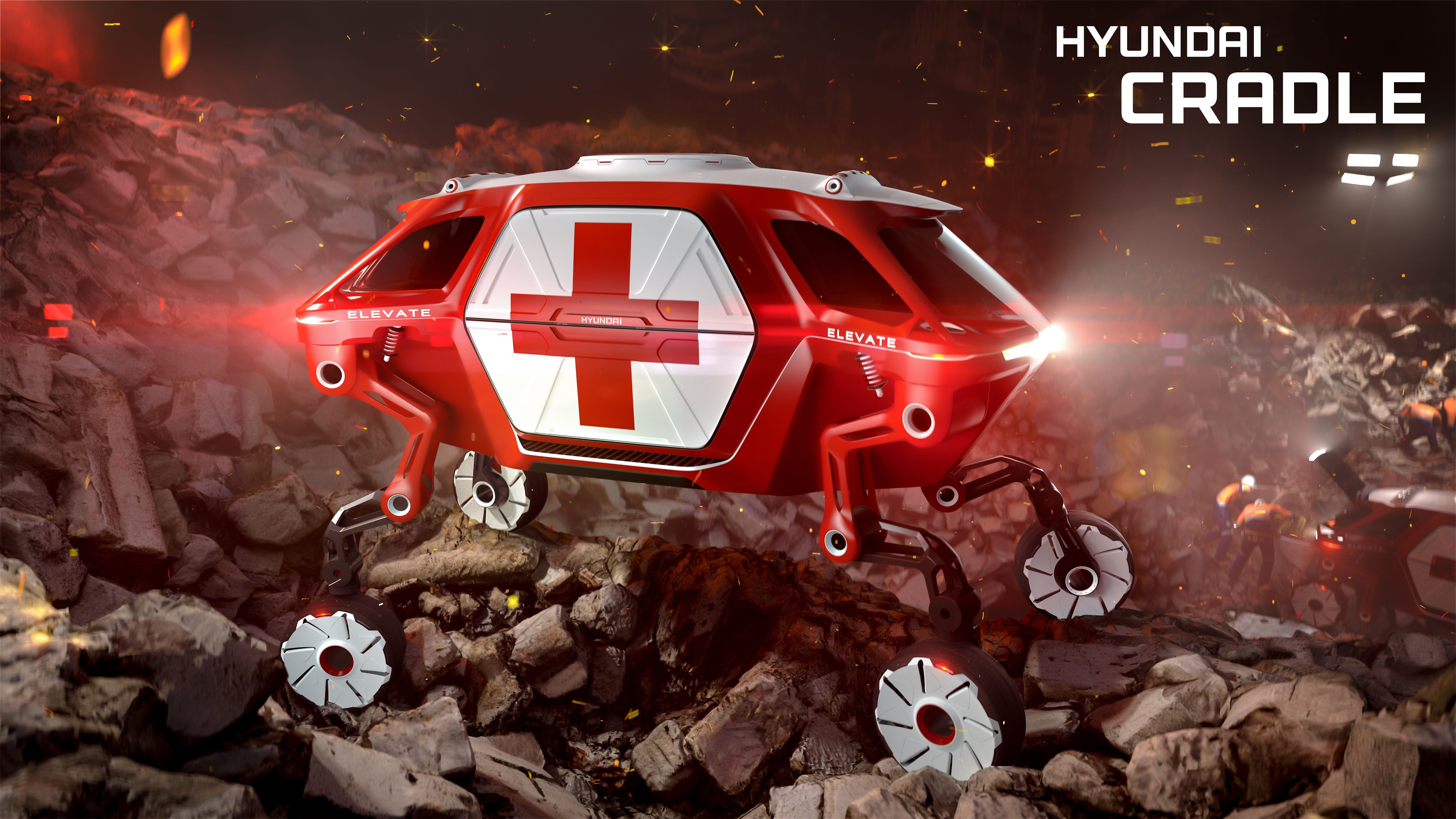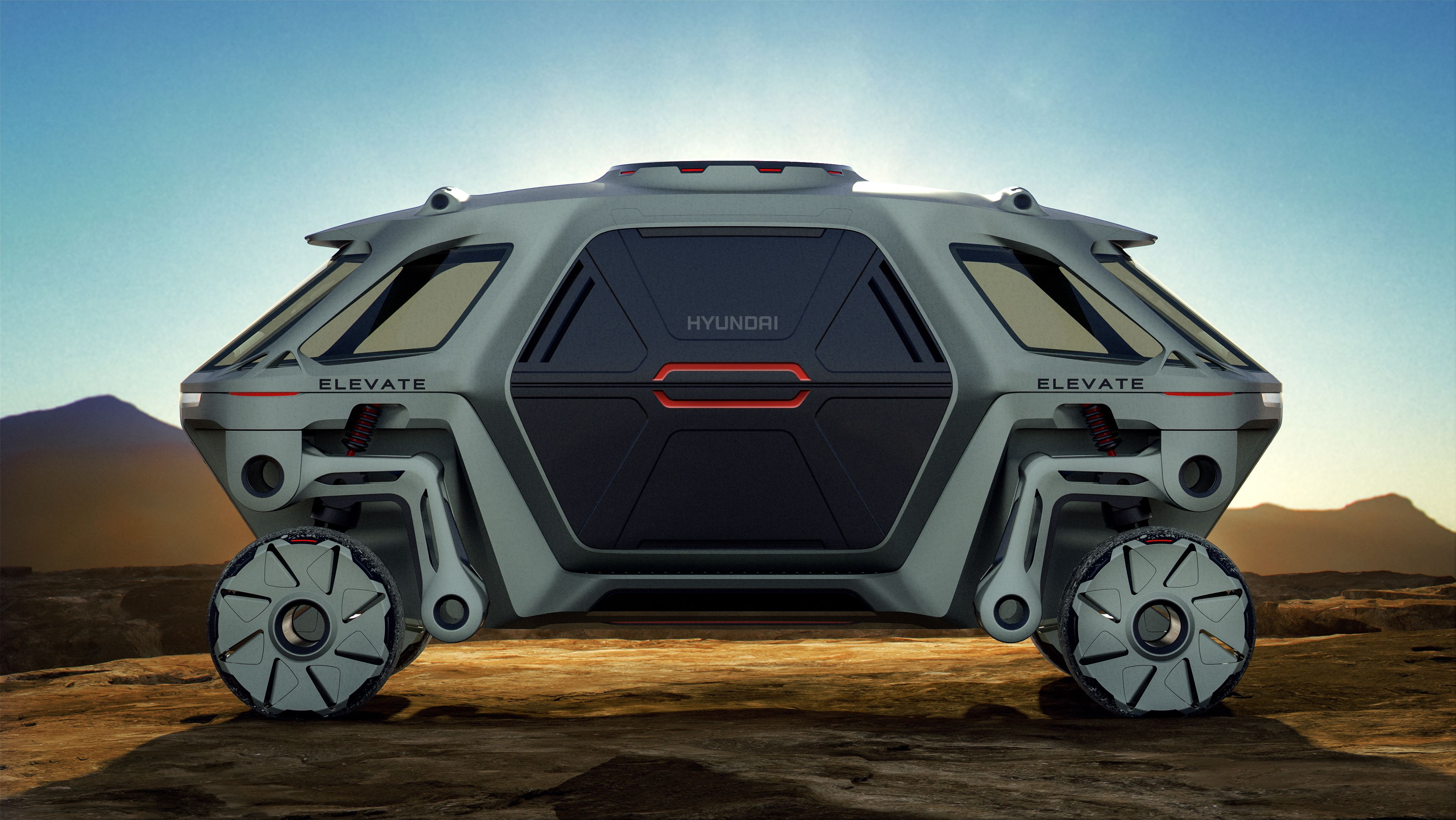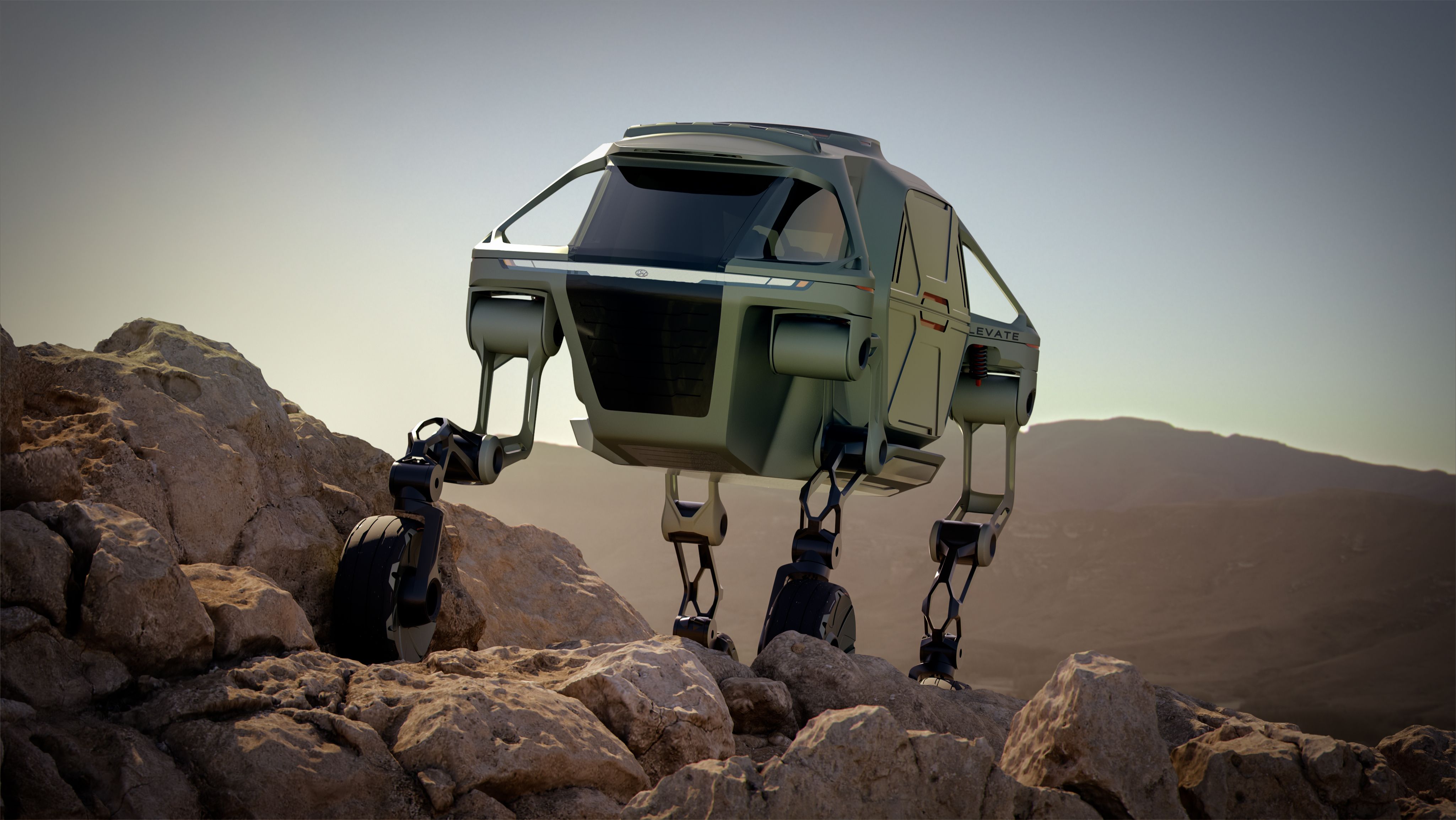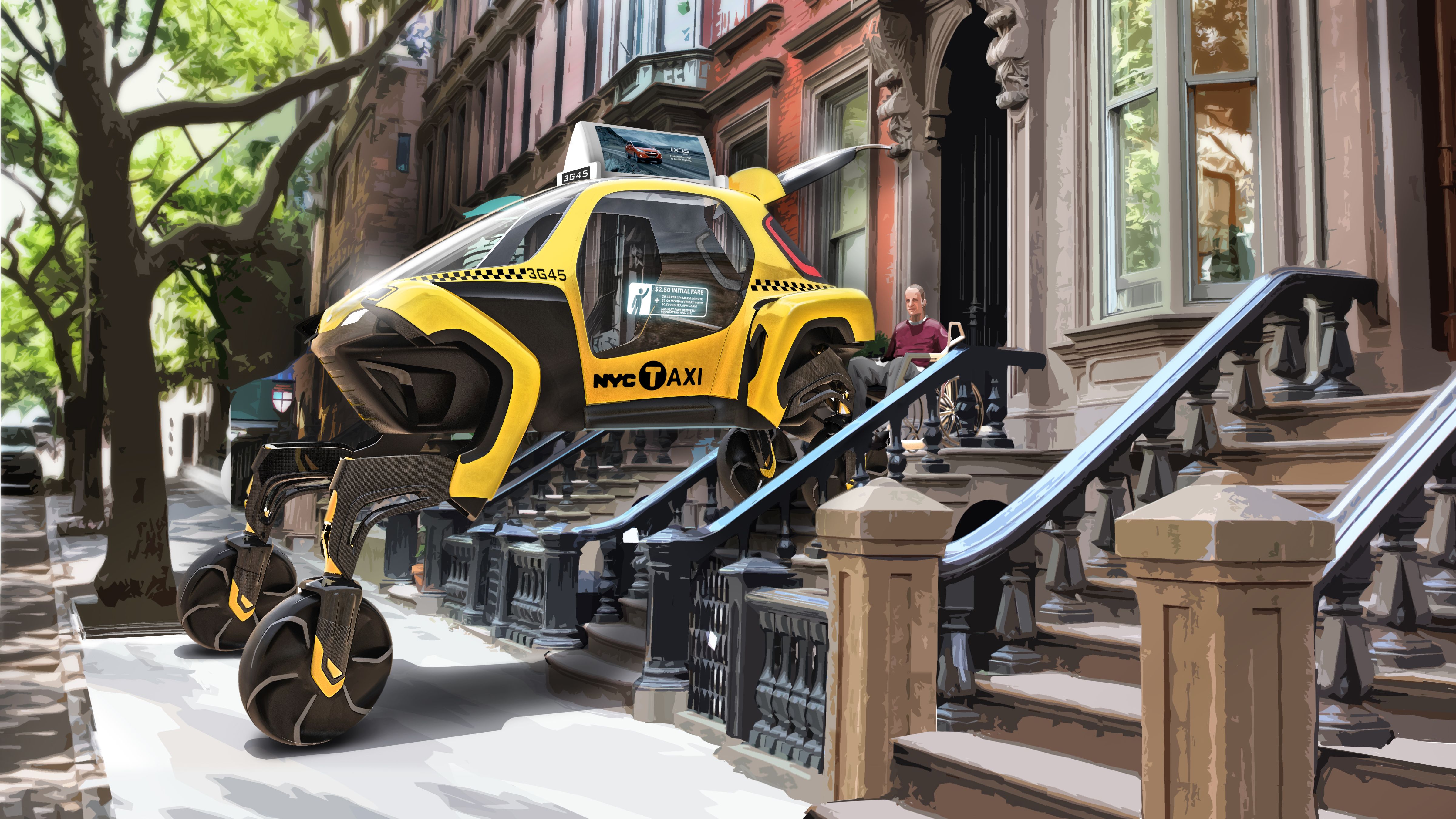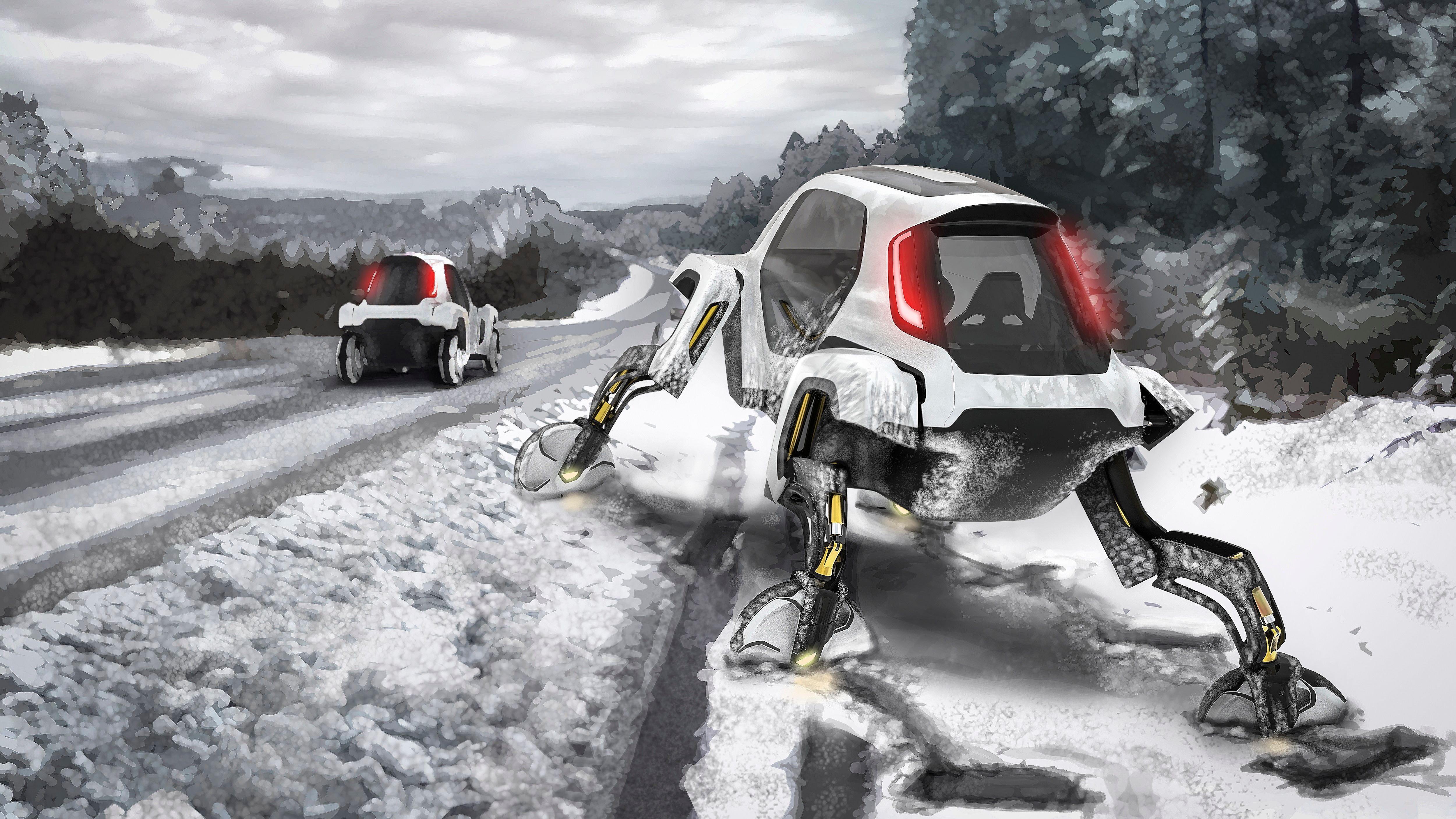I thought I had sen it all, but then Hyundai revealed the Elevate Concept, an Ultimate Mobility Vehicle (UMV), at this year's CES. It is a car. Actually, a vehicle that can drive and that can walk. Yup, you've read that right. The Hyundai Elevate Concept is one of the latest projects that has developed in the minds of Hyundai designers heads from the Hyundai Cradle Center for Robotic-Augmented Design. These people are obviously buried into sci-fi, or, at least, into things that Boston Dynamics does with its robots. Hyundai Cradle created a vehicle that looks a bit like that Boston Dynamic cyberdog, or the Star Wars AT-AT walker. But the Hyundai Elevate Concept isn’t supposed to go to war (well, it is a bit). In fact, it is an out-of-the-box design exercise that shows the possibilities for an all-terrain vehicle that weren’t explored before.
And, with this, I do not imply comparing it with the machines that can conquer Moab. The Elevate Concept is a vehicle designed to help the unfortunate in search-and-rescue missions, on humanitarian missions, or to walk over terrain no vehicle has ever managed to traverse. Its go-anywhere capability is unmatched even by the most extreme offroad machines you can think of. All because of the robotic legs with tires linked on far ends. Actually, as I visually inspect the Elevate Concept, I am rather sure that a similar sketch exists somewhere in a NASA office in a drawer where all the rejected designs for Mars rovers reside. I get that vibe from this. It's like Hyundai designers looked to create a vehicle for the Earth from the perspective of some “alien NASA” designers. I actually like it a lot.
The Hyundai Cradle, a Center for Robotic-Augmented Design in Living Experiences, that actually envisioned the vehicle, managed to craft something that goes well beyond what a standard car, or a truck, can do. The Hyundai Elevate Concept can walk, climb, and traverse almost every kind of terrain.
2019 Hyundai Elevate Concept
- Make: Array
- Model: 2019 Hyundai Elevate Concept
- [do not use] Vehicle Model: Array
Exterior
Now, you should forget everything you know about car design. The Elevate Concept has basically been designed around the robotic legs that sit on its four corners. No Fluidic Sculpture here. At all. Only pure form and function. With a friendly attitude, I might add.
Hyundai gifted us with a number of different options for the Elevate Concept body. We can see it as an NYC taxi, as a search and rescue vehicle, as an army transport, or just as a shuttle.
“By combining the power of robotics with Hyundai’s latest EV technology, Elevate has the ability to take people where no car has been before, and redefine our perception of vehicular freedom,” said Design Manager David Byron.
“Imagine a car stranded in a snow ditch just 3 meters off the highway being able to walk or climb over the treacherous terrain, back to the road potentially saving its injured passengers – this is the future of vehicular mobility.”
So, after all this has been said, I can conclude that the exterior design depends on the vehicle application. You cannot expect a New York Taxi that moves on the highway and in the city to look the same as a search and rescue vehicle, can you now? This gives a proper utilitarian essence to the overall idea behind the Elevate Concept.
Interior
Hyundai did not reveal any photos of the interior, but I can tell you right away that the NYC Taxi interior isn’t the same as the rescue vehicle interior. In fact, Hyundai PR gurus wrote only one sentence about the Elevate Concept interior:
“Inside the Elevate, passengers would experience a vehicle fully engineered to tackle the roughest terrain comfortably.”
Honestly, I do not see the Elevate with the gear from the Palisade.
Drivetrain and Tech
Standard propulsion methods would never allow for the creation of a car like this. Just imagine if the Elevate had axles. With axles, it could not have legs, nor wheels that can turn in any direction.
In fact, let me show you exactly what Hyundai revealed in its press release about the Elevate Concept capabilities.
PR reads:
“The legs also fold up into a stowed drive-mode, where power to the joints is cut, and the use of an integrated passive suspension system maximizes battery efficiency. This allows Elevate to drive at highway speeds just like any other vehicle. But no other can climb a five-foot wall, step over a five-foot gap, walk over diverse terrain, and achieve a 15-foot wide track width, all while keeping its body and passengers completely level.”
Furthermore, the main capabilities include:
-* Robotic legs with five degrees of freedom plus in-wheel propulsion,
-* Ability to walk in a mammalian and a reptilian style gaits for omnidirectional motion,
-* Capable of climbing a five-foot vertical wall,
-* Step over a five-foot gap,
-* Non-back drivable motors enable the legs to lock in any position,
-* Modular electric vehicle platform.
As all of this is rather hard to imagine, I found a nice video on the Elevate Concept that showcases what this concept is actually capable of. If you are into this thing, I highly suggest you watch it.
Conclusion
If Hyundai Cradle manages to produce a full-size working prototype with all the capabilities shown in the pictures and on the videos you could see here, I will be amazed. This thing looks complicated, and I am not certain how that walking, jumping thingy would work in the real world. However, we do have rovers on Mars. Read that again. Rovers on Mars. And they work. Like, really well. Yes, Hyundai can definitely build this and probably provide another solution for the unfortunate in the areas with natural disasters, or any other types of disaster.
Hyundai Cradle is definitely focused on solving many “search and rescue” issues with the UMV.
“When a tsunami or earthquake hits, current rescue vehicles can only deliver first responders to the edge of the debris field. They have to go the rest of the way by foot. Elevate can drive to the scene and climb right over flood debris or crumbled concrete,” said John Suh, Hyundai Vice President and Head of Hyundai CRADLE.
“This technology goes well beyond emergency situations - people living with disabilities worldwide that don’t have access to an ADA ramp could hail an autonomous Hyundai Elevate that could walk up to their front door, level itself, and allow their wheelchair to roll right in – the possibilities are limitless.”
I don’t know if I am just hyped up about this, but I really want the Elevate Ultimate Mobility Vehicle (UMV) to be a thing.
Further reading
BMW's New Futurelight Camper Concept Represents the Future of Outdoor Adventure
Read our full review on the 2008 BMW GINA Light Visionary Model.
Toyota Showcases its "Toyota Guardian" Technology that Could Create Superhuman Drivers
Mercedes-Benz Debuts the 2020 CLA Class At CES With Fresh Tech
Read more technology news.

